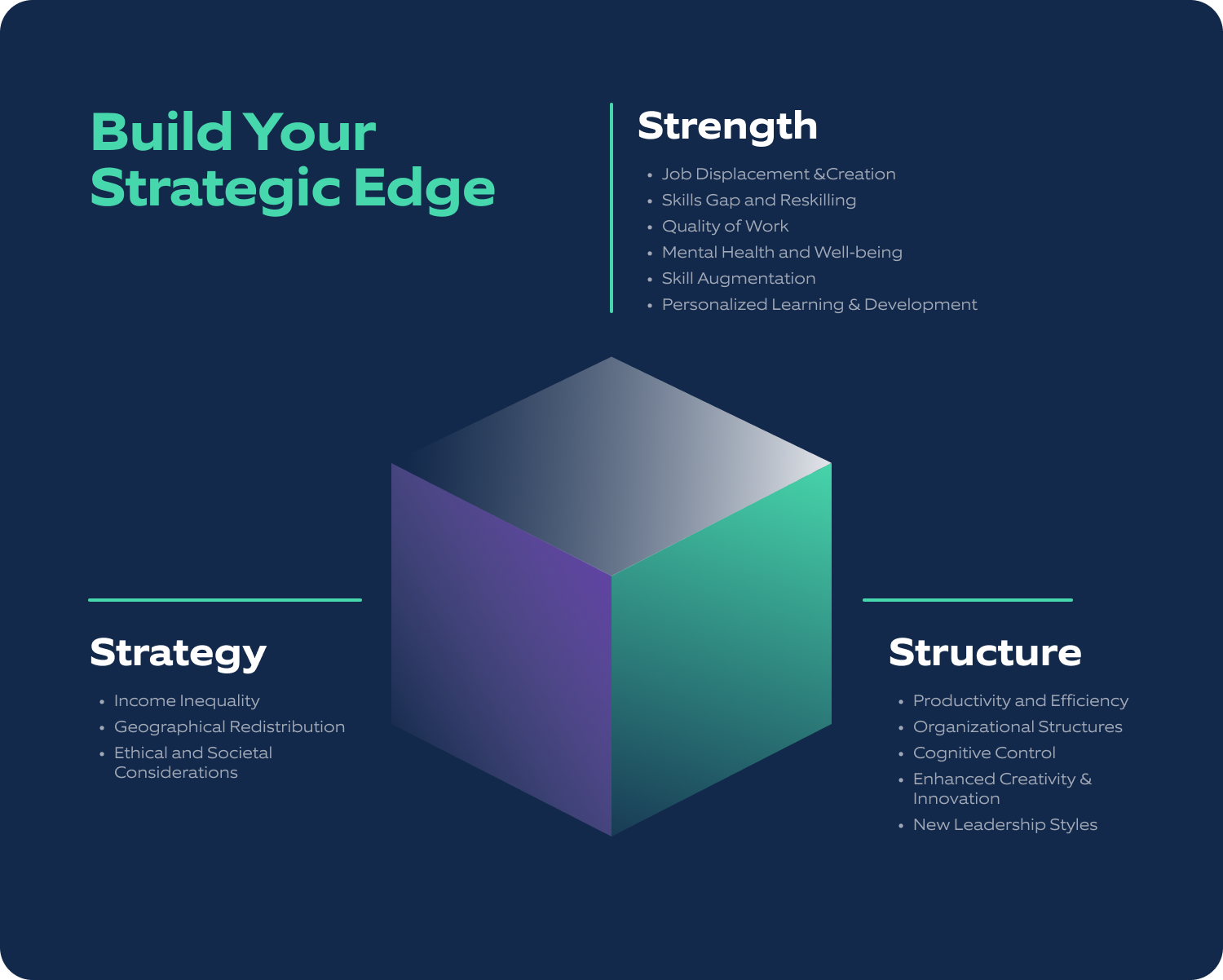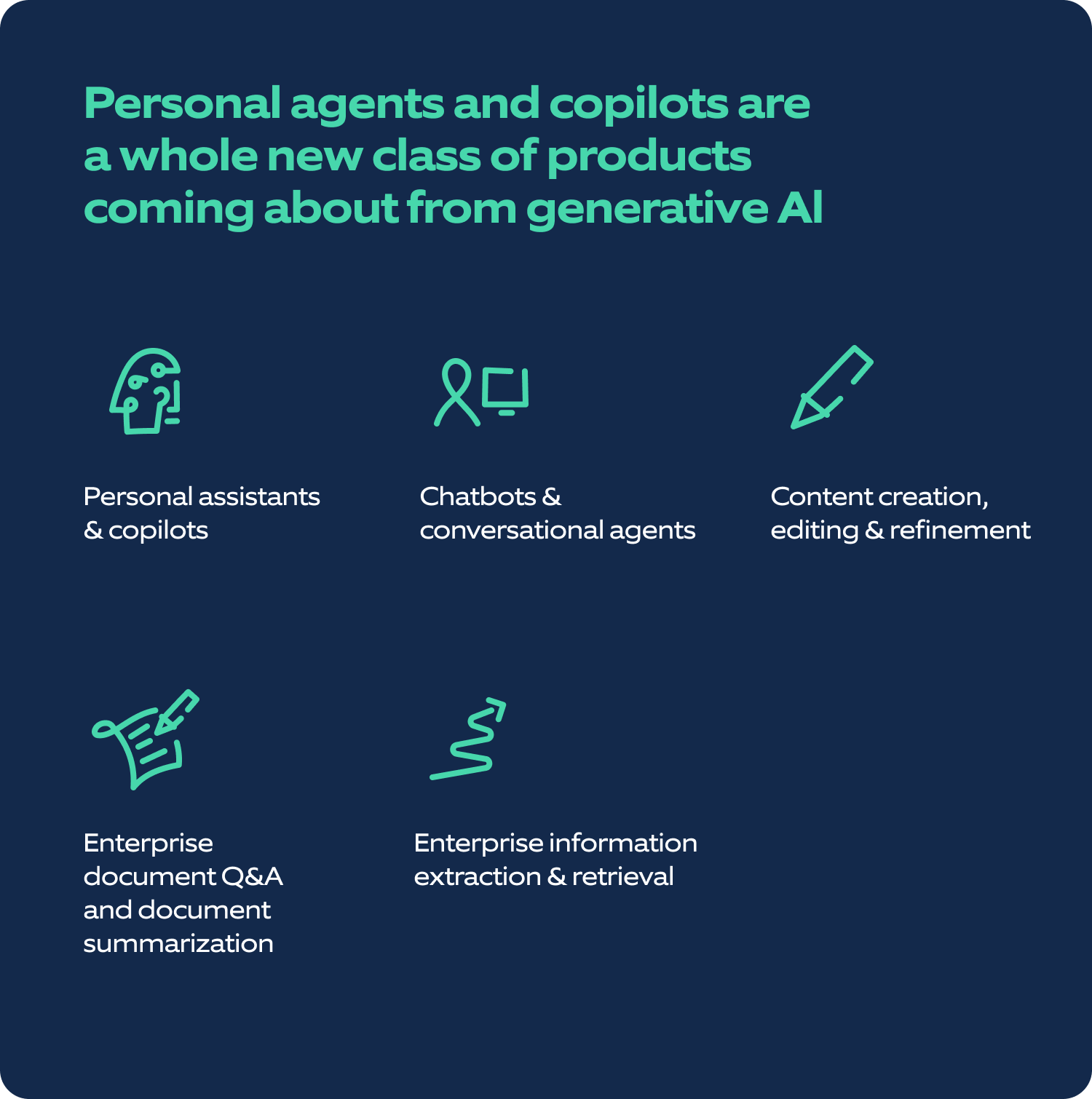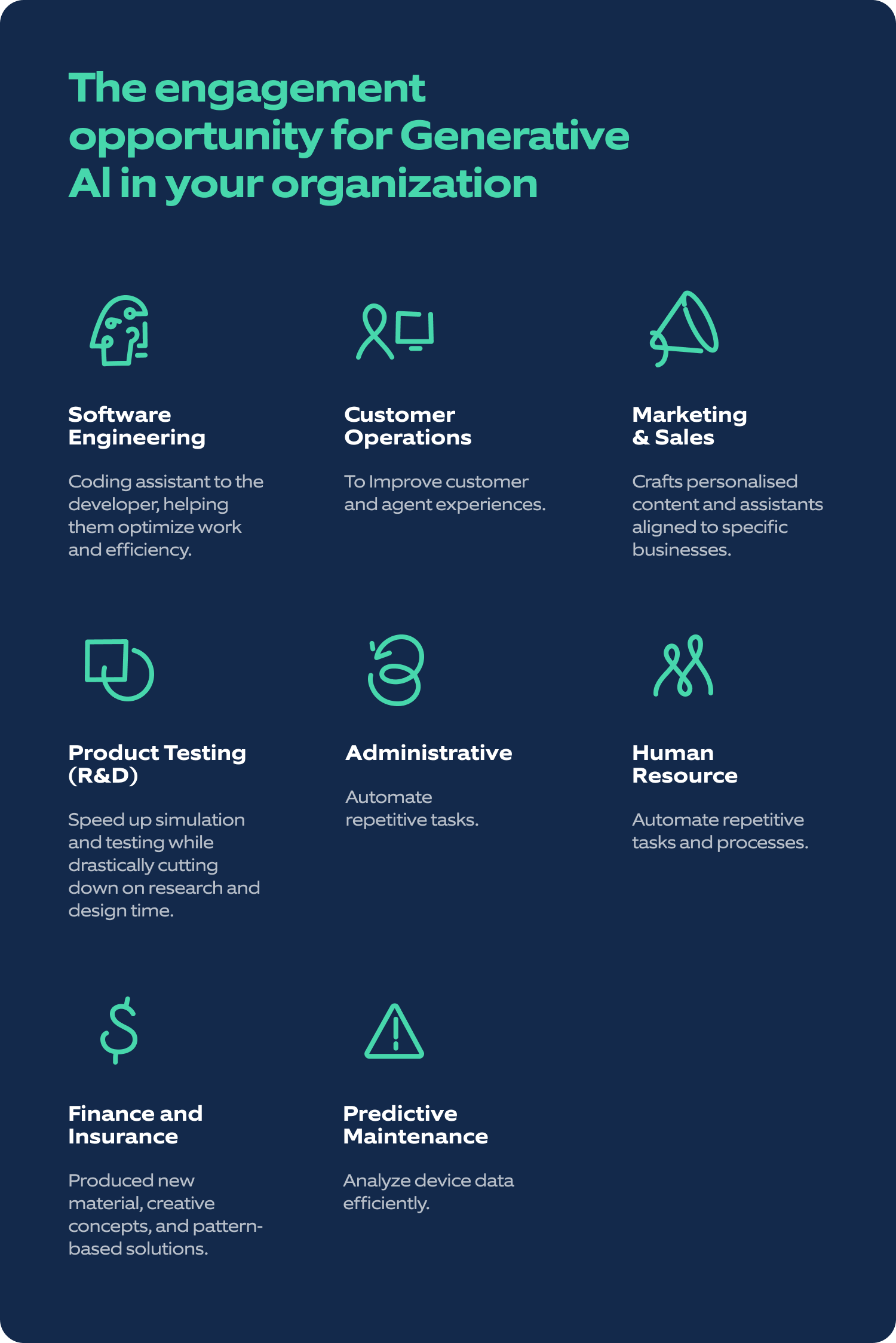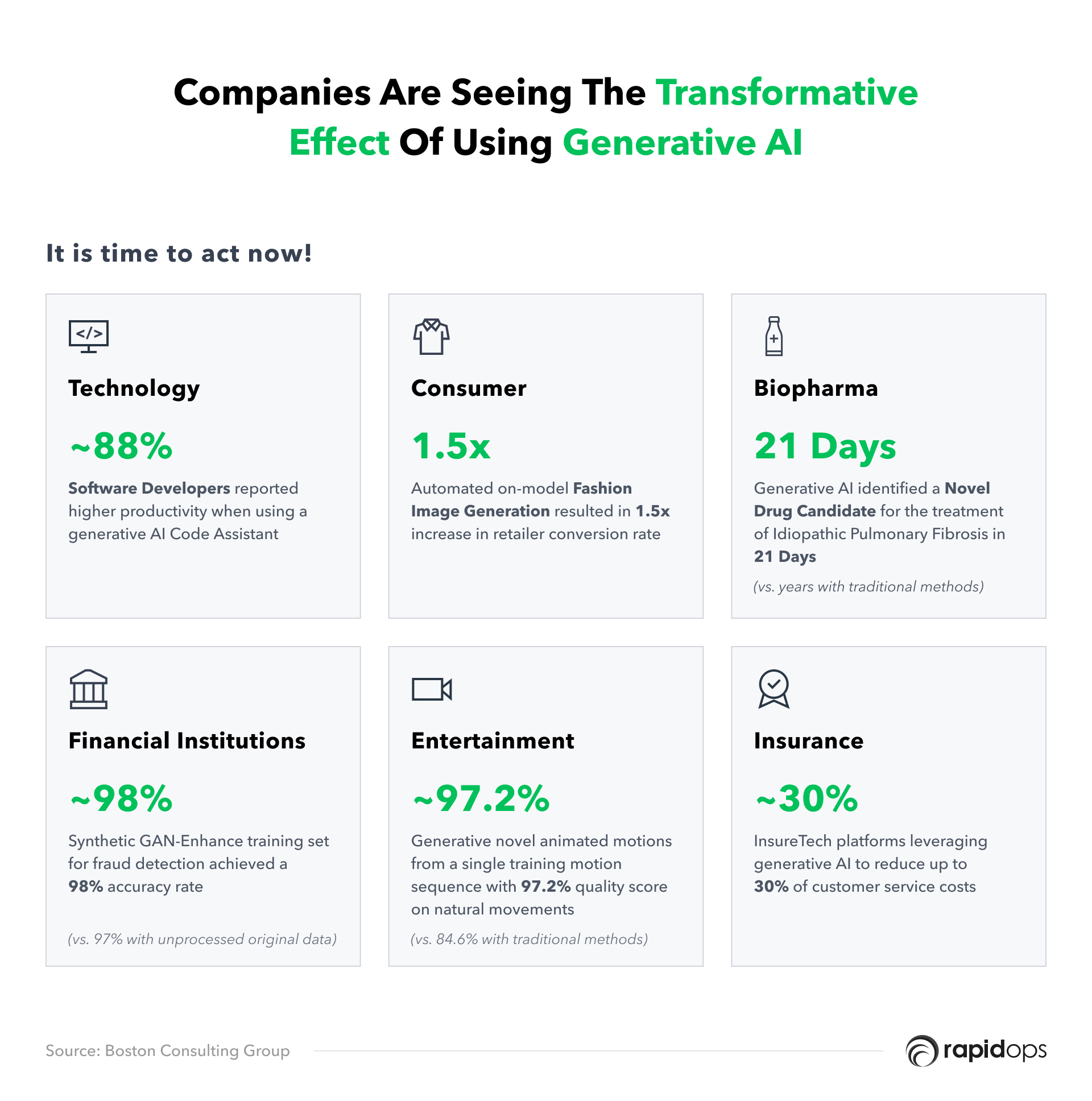Build your strategic edge
The transforming digital landscape is a force that is reshaping businesses and the global workforce rapidly. This is expected to accelerate, presenting a multifaceted impact on economies, societies, and individuals.
“Generative A.I. can create “superpowers” for high-skilled workers," said Lareina Yee, a McKinsey partner and an author of the report. “The most profound change we are going to see is the change to people, and that’s going to require far more innovation and leadership than technology,” (source: New York Times).
Building an AI-ready workforce is a strategic focus area. Are the people working with these products ready to adopt Generative AI as a solution? Also, it isn’t a developer-only solution. It requires different stakeholders to be a part of this solution, so as a strategic approach, we must have people from various roles involved in its implementation and adoption cycle. CEOs need to focus on strategic decisions that will enable them to handle the challenges and be successful with this solution adoption.
Generative AI transformation calls for a focus on three dimensions: strength (people), structure (operations), and strategy (the thought-out and responsible plan of action).

Strength
Job displacement & creation:
As automation takes over repetitive and manual tasks, there is likely to be significant job displacement. However, it is critical to recognize that automation also creates new jobs and roles that didn't exist before. The nature of jobs will change.
Skills gap and reskilling:
The workforce transformation brings forth a glaring challenge: the skills gap. As new roles emerge and old ones become obsolete, there is an urgent need for reskilling and upskilling.
Quality of work:
This creates an opportunity for the workforce to engage in more meaningful, creative, and high-value tasks. However, this positive outcome depends on how well the transition is managed.
Mental health and well-being:
Uncertainty about job security and the demands of adapting to new roles can cause stress and anxiety in the workforce. It's crucial that mental health and well-being are considered integral aspects of workforce transformation strategies.
Skill augmentation:
It is not just about replacing human effort; it's also about augmenting human capabilities. For instance, in roles like customer service, AI can provide real-time information to representatives, significantly enhancing their ability to solve customer issues.
Personalized learning & development:
GenAI's ability to personalize experiences extends to employee training and development. AI-driven learning platforms can create customized training programs for individuals, ensuring each employee acquires the skills and knowledge needed to excel in an AI-augmented workplace.
Structure
Productivity & efficiency:
Automated systems will perform tasks faster and more accurately than human counterparts. This will enable businesses to achieve higher output levels and streamline previously labor-intensive processes. Prepare for this disruption.
Organizational structures:
The acceleration of workforce transformation is also likely to affect organizational structures. Hierarchies may flatten, and we might see a rise in more flexible and dynamic team structures. Organizations will need to be agile and adaptable to keep pace with rapid changes.
Cognitive control:
With AI taking over tasks that require significant cognitive efforts, leadership will have more control over the operations.
Enhanced creativity & innovation:
With AI taking over mundane tasks, human workers have more time and cognitive freedom to engage in creative thinking and innovation. This is particularly important in roles that involve design, content creation, and problem-solving, where AI can be used as a tool for Generating novel ideas and solutions.
New leadership styles:
Managing an AI-augmented workforce requires a shift in leadership styles. Leaders will need to focus on nurturing a culture of innovation, adaptability, and lifelong learning. Moreover, emotional intelligence and the ability to lead in uncertain and rapidly evolving environments will become more important.
Strategy
Income inequality:
The benefits of automation may not be evenly distributed. Highly skilled workers who can work alongside automated systems may see their incomes rise, whereas low-skilled workers may face unemployment or wage stagnation. This calls for robust social policies to ensure income inequality does not exacerbate.
Geographical redistribution:
Automation and remote working technologies may lead to a redistribution of jobs geographically. Jobs may no longer be tied to specific locations, and this could have far-reaching impacts on local economies and real estate markets.
Ethical and societal considerations:
The automation of work activities by AI necessitates ethical considerations, particularly in relation to bias, privacy, and the potential dehumanization of work. AI systems must be developed and implemented with ethical guidelines to augment human workers without compromising values and societal norms.
Generative AI is the way of the future and the present. Businesses that grasp the potential of Generative AI and tools like ChatGPT to create products that improve consumer experiences will be at the forefront of this breakthrough. However, resist the urge to move forward alone with technology like Generative AI that is developing and maturing so swiftly. Rather, seek assistance and knowledge from partners, colleagues, and outside organizations active in this field.




-3.png)





